Crossing the Dardanelles to the Gallipoli Peninsula – Canakkale to Kilitbahir
The breakfast at the Helen Park Hotel was fit for a king (and queen). Peter piled his plate with a selection of meats, cheeses and olives of every kind imaginable! I headed straight for the savoury doughnuts called Pisi and the sour cherry preserve, something I’ve become rather addicted to during our stay in Turkey.
Today we are going to spend time in Canakkale, starting with a walk into the centre of the old town. It’s very easy to explore on foot, which allows time to appreciate the traditional architecture away from the harbour. Many of the houses feature sachnisi—enclosed bay windows that extend from the upper floors above the street. Some are restored, others show their age, but all contribute to the character of the central neighbourhoods.
We passed traditional shops that still operate in much the same way they would have decades ago. I love the eclectic mix of products you can find displayed next to each other – wicker baskets to wheelbarrows and loufas with freshly chopped logs and washing lines. It’s the kind of shop that invites you to come in and browse.
At the corner of almost every street were sellers with wooden carts shaded by parasols, offering fresh seasonal fruit. Today, it was figs and plums, simply displayed in shallow crates, sometimes with a knife tempting customers to try before they buy. Nearby, the scent of freshly cooked batter drifted out from a small waffle shop where children were tucking into these treats covered with chocolate and sweets. We stopped at a small cafe for tea whilst we watched the morning hustle and bustle take place around us.
Before we headed to the harbour front, we had a walk through the Aynali Carsi, also known as the Mirrored Bazaar. It’s the most famous historical marketplace in Canakkale, dating back to the 1890s. It gets its name from the mirrors that once decorated the upper sections of the bazaar. The bazaar was renowned for selling bridal accessories, and the mirrors were traditionally used in bridal preparations or for special occasions. The mirrors are no longer there, but it still retains its traditional atmosphere
Today, it is a lively artisan market, selling handmade ceramics and tiles with Ottoman designs, copper crafts, engraved metalwork, jewellery, evil eye charms, scented olive oil soaps, textiles, and embroidered items. It’s a real Aladdin’s Cave!
The cobbled streets led us past the old clock tower and back towards the harbour front, where we went to say good morning to the large Trojan Horse sculpture – the one built as a film prop for the 2004 movie Troy — now one of the most photographed landmarks in Çanakkale.
Along the water’s edge, street food stalls offered midye dolma, mussels stuffed with spiced rice, typically eaten with a squeeze of lemon. It is a popular snack in coastal towns, served ready to eat. Local families fished from the pier, a sight common from dawn to dusk.
Canakkale has been one of those places that I liked from the moment I arrived. Yes, the modern infrastructure has developed to accommodate tourism to the region, but at its core, it still feels traditional as seen through its architecture and community.
Whilst close to the ferry terminal, we go into the office to confirm the ferry schedules for the next leg of our journey. Tomorrow we will be heading to Bozcaada, a small island south of Çanakkale. Although the Bozcaada ferry departs from Geyikli rather than from Çanakkale itself, schedules and ticket information are handled by the same ferry company at the harbour office, so it was straightforward to check. Once that was confirmed, we decided to hop on the next ferry across to Kilitbahir for some further exploration.
The crossing took around fifteen minutes. From the deck, we had a clear view of the Dur Yolcu memorial on the hillside. The inscription, translated as “Halt, traveller! The soil you tread upon is where an era sank,” forms part of a memorial marking the Gallipoli Campaign (1915), when Ottoman forces defended the Dardanelles against the Allied naval advance. Kilitbahir sits on the Gallipoli Peninsula, and the area attracts significant war heritage tourism. Today, we are going to dip our toes into a small part of that experience.
Once in Kilitbahir, we followed the road left along the shoreline, through the city gate and past Kilitbahir Kale. Although I love a castle, we don’t intend to visit this one today. Maybe when we return to Canakkale after visiting Bozcaada, it may be an option, but our itinerary is beginning to pick up pace again. I was conscious that Peter’s 3 weeks would soon be upon us, as he’d need to return home for work. The ‘idea’ was that he would fly home from Istanbul, though he hasn’t shown any interest in booking his return flight yet. If you think I’m pretty laid back about the itinerary, multiply that by 10 for the Egyptian!
Opposite the castle stands Fort Namazgâh, built during the mid-19th century under Sultan Abdülmecid I. Its earth-covered design blends into the landscape, which during the war made it difficult for enemy ships to identify artillery positions from the sea. Beneath the mounds are interior corridors, magazines, and gun emplacements forming part of the strait’s defensive system.
Further along is the Rumeli Mecidiye Bastion, constructed in the early 1890s by Asif Pasha under Sultan Abdulhamid II. The Dardanelles were strategically critical, and in March 1915, Allied forces attempted to force passage with a naval attack. The attack failed, and the next phase of the campaign began on land in April 1915, marking the start of the long Gallipoli land battles.
We entered the vaulted storage buildings of the bastion, where preserved artillery positions and displays explain the fort’s role in the defence of the Dardanelles. Tracks on the floor show how heavy shells were moved to the guns on wheeled platforms. The interior layout reflects the scale and organisation of the artillery operations. The bastion provides an unobstructed view across the strait to Çanakkale, illustrating why this location was strategically vital.
Adjacent to the bastion is a memorial stone and statue of Corporal Seyit (Seyit Onbaşı). During heavy bombardment in 1915, the shell-loading machinery failed, and Seyit reportedly lifted a 275 kg artillery shell by hand. This ultimately contributed to disabling the British battleship HMS Ocean. The statue marks the location of this event and provides historical context for visitors. War heritage tourism is significant in this region, as we learned from other guests we’d met during our stay who’d come specifically to visit Gallipoli’s naval and battlefield sites.
As we made our way back towards the ferry terminal, we stopped at one of the small cafes overlooking a small marina for much-needed refreshments. We liked the traditional ambience and thought it would be nice to come back later that evening for dinner.
And we did. There is something very special about being able to hop on a boat and travel across water for dinner and then easily to be able to hop back.
Tomorrow we leave for Bozcaada, previously known as Tenedos, another Turkish island that was once home to a significant Greek population.

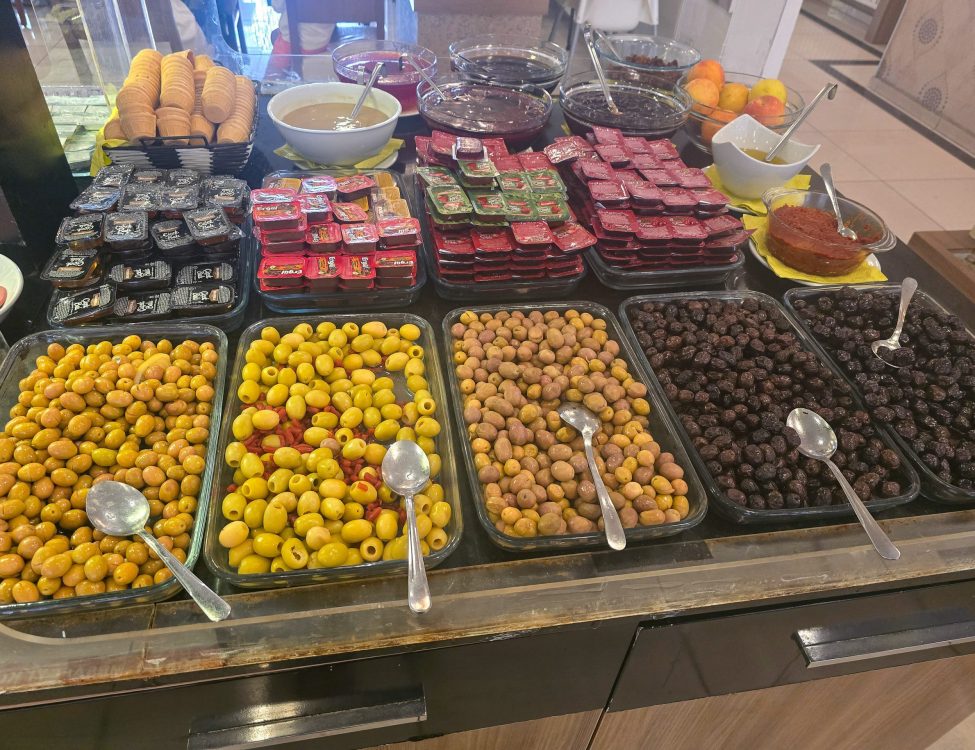
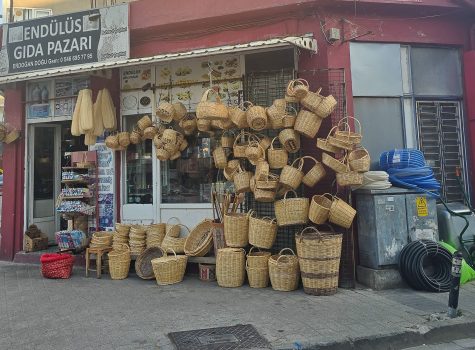
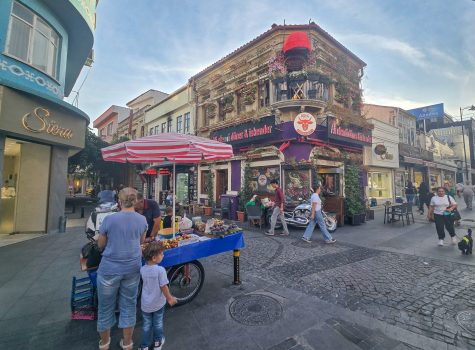
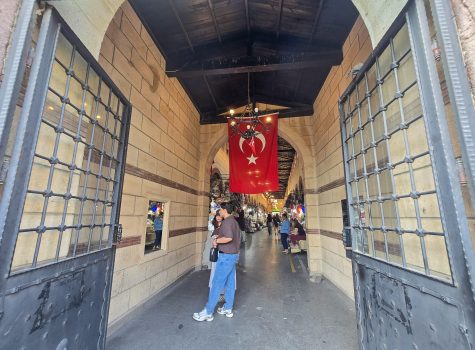
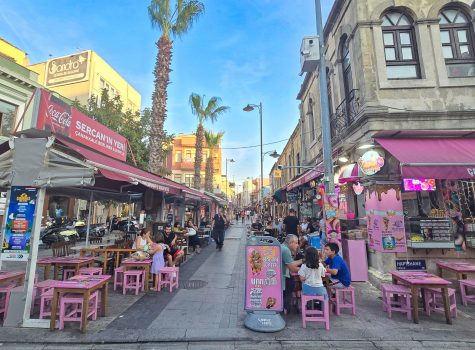
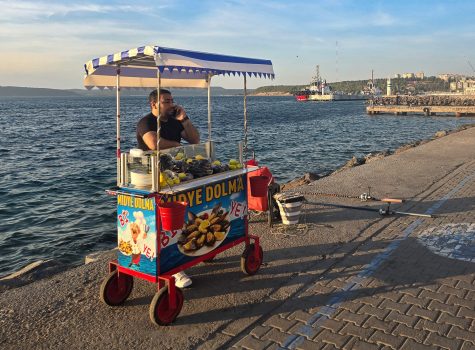
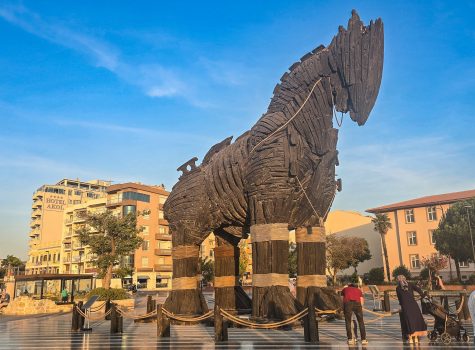
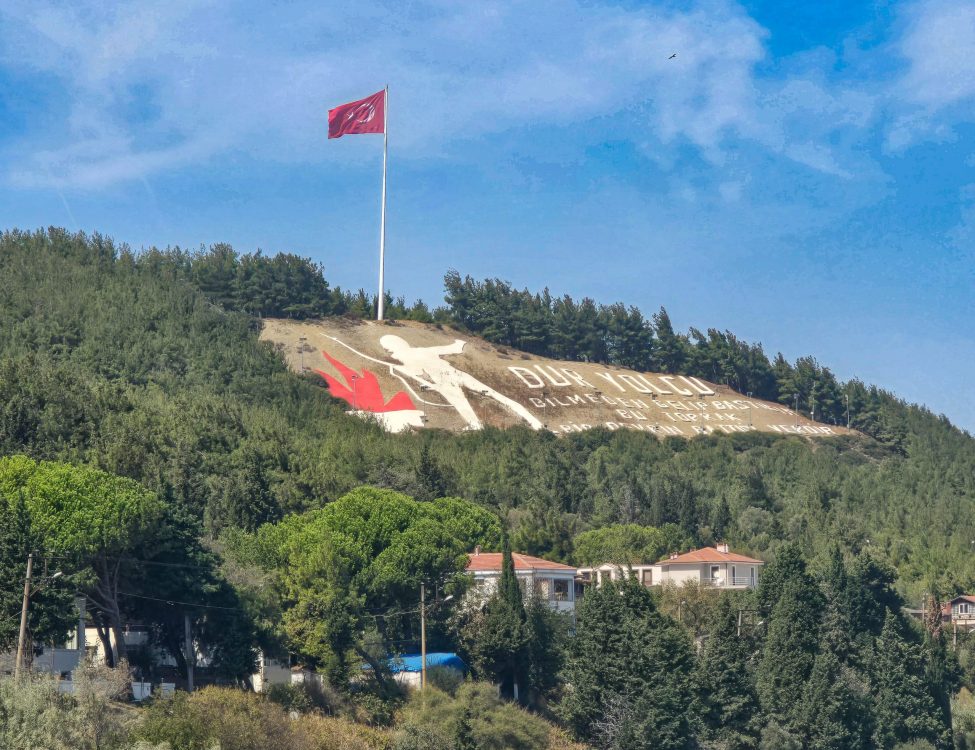
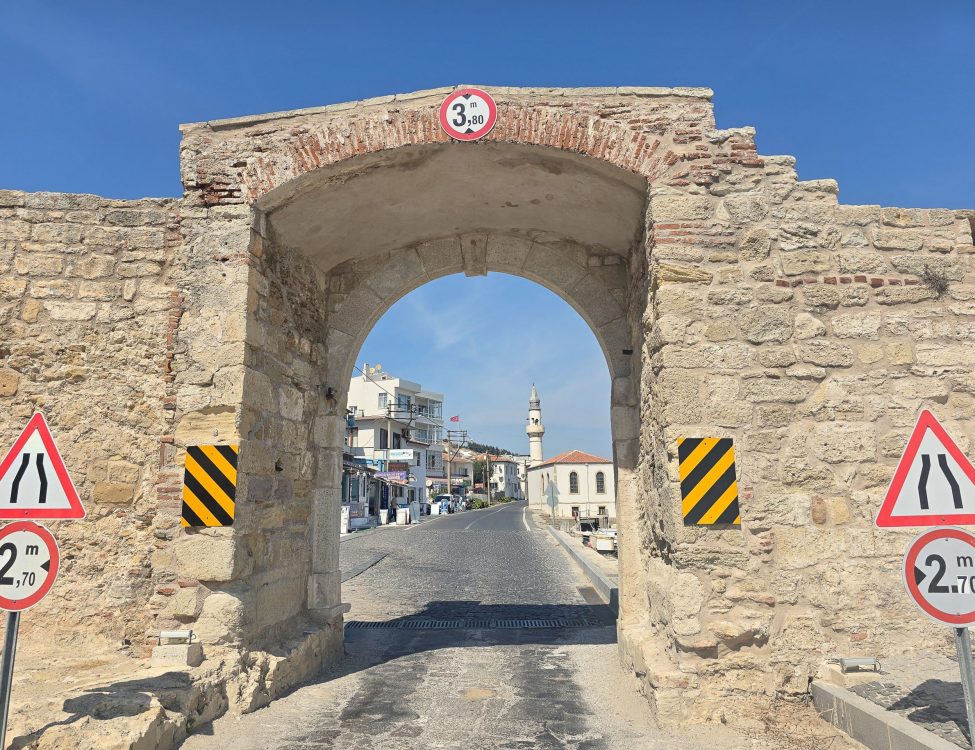
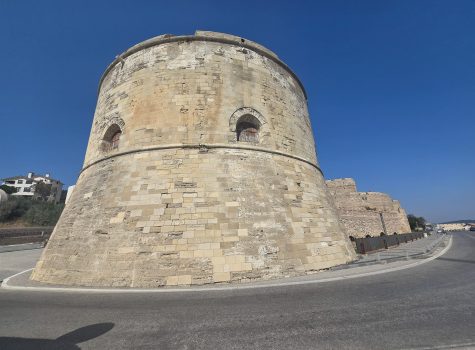
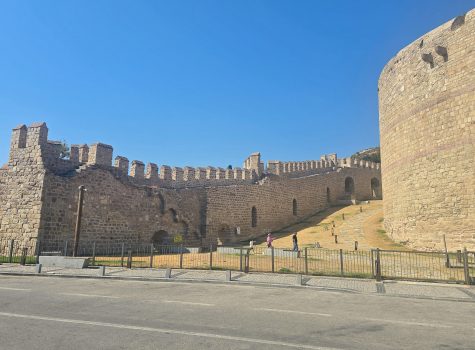
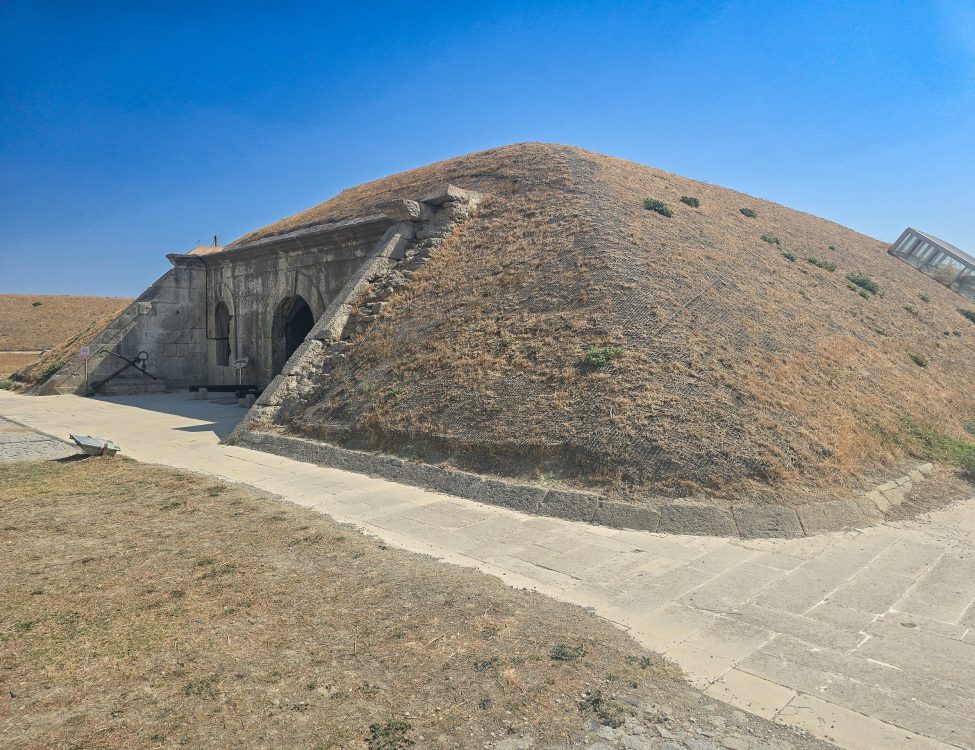

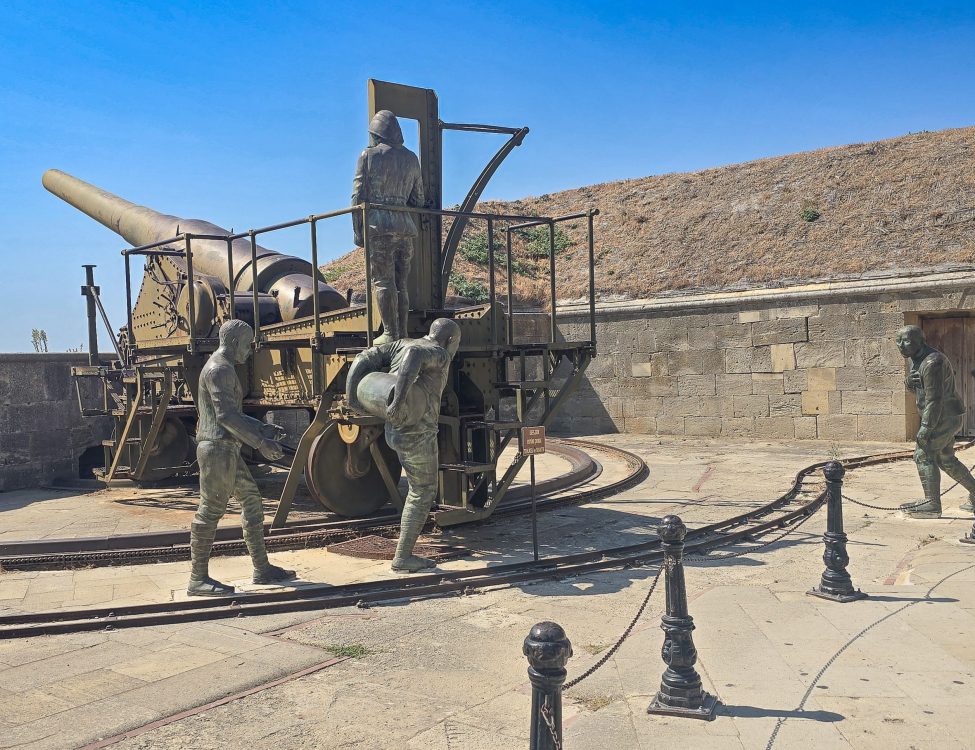
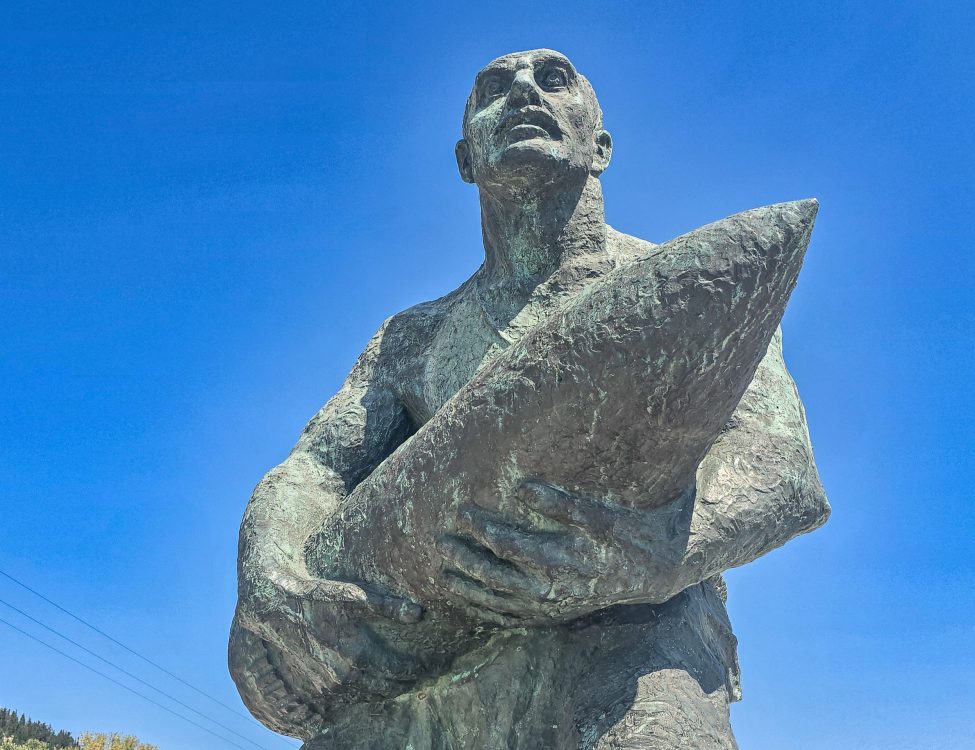
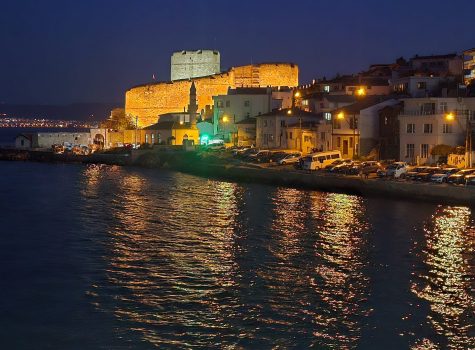
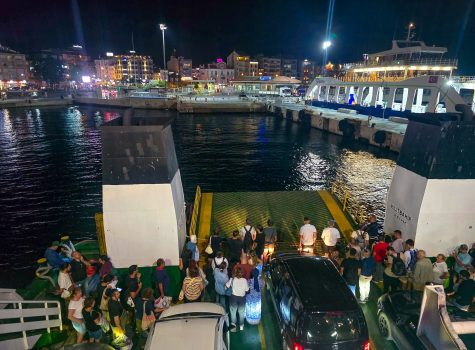






I love the way that your holiday days revolve around food and drink – same as me Stephanie!